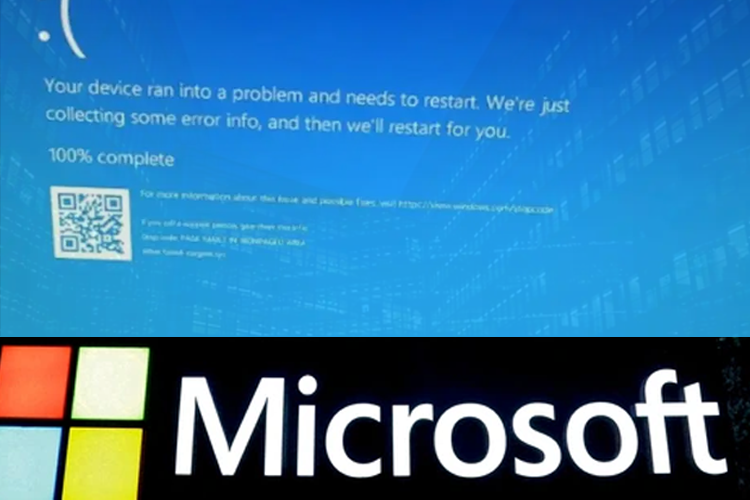
How to Fix ? Windows Outage World Wide - July 2023. Error : Your device ran into a problem and need to restart. shutting down again and again..
A Microsoft Cloud outage has impacted millions of computer systems globally. Users reported sudden shutdowns or restarts of their systems, which Microsoft attributed to a recent CrowdStrike update. According to Microsoft's Service Health Status updates, the preliminary cause is a configuration change in part of their Azure backend. This change disrupted the connection between storage and compute resources, leading to connectivity failures.
Steps to Fix the Issue:
Step-1 : Boot Windows into Safe Mode or the Windows Recovery Environment
Step-2 : Navigate to the C:\Windows\System32\drivers\CrowdStrike directory
Step-3 : Locate the file matching C-00000291*.sys and delete it
Step-4 : Boot the host normally.
How to Enter safe mode ?
For ASUS Devices:
-
Using F8 or Shift + F8 (if supported):
- Restart your computer.
- As soon as the computer starts, press
F8orShift + F8repeatedly before the Windows logo appears. - If successful, you’ll see the Advanced Boot Options menu. Use the arrow keys to select
Safe Modeand pressEnter.
-
Using Windows Recovery Environment (WinRE):
- Restart your computer. As soon as it starts, press
F2,F10, orDelto enter the BIOS/UEFI setup (the specific key might vary). - In the BIOS/UEFI setup, navigate to the Boot menu.
- Set the primary boot device to your Windows installation drive and exit the BIOS/UEFI setup.
- Once Windows starts, press and hold the
Shiftkey and selectRestartfrom the power menu. - After the computer restarts, select
Troubleshoot>Advanced options>Startup Settings>Restart. - After another restart, you’ll see a list of options. Press
4orF4to start in Safe Mode.
- Restart your computer. As soon as it starts, press
For Intel Devices:
-
Using F8 or Shift + F8 (if supported):
- Restart your computer.
- As soon as the computer starts, press
F8orShift + F8repeatedly before the Windows logo appears. - If successful, you’ll see the Advanced Boot Options menu. Use the arrow keys to select
Safe Modeand pressEnter.
-
Using Windows Recovery Environment (WinRE):
- Restart your computer. As soon as it starts, press
F2,F10, orDelto enter the BIOS/UEFI setup (the specific key might vary). - In the BIOS/UEFI setup, navigate to the Boot menu.
- Set the primary boot device to your Windows installation drive and exit the BIOS/UEFI setup.
- Once Windows starts, press and hold the
Shiftkey and selectRestartfrom the power menu. - After the computer restarts, select
Troubleshoot>Advanced options>Startup Settings>Restart. - After another restart, you’ll see a list of options. Press
4orF4to start in Safe Mode.
- Restart your computer. As soon as it starts, press
For Other Devices:
-
Using F8 or Shift + F8 (if supported):
- Restart your computer.
- As soon as the computer starts, press
F8orShift + F8repeatedly before the Windows logo appears. - If successful, you’ll see the Advanced Boot Options menu. Use the arrow keys to select
Safe Modeand pressEnter.
-
Using Windows Recovery Environment (WinRE):
- Restart your computer. As soon as it starts, press the appropriate key to enter the BIOS/UEFI setup (this could be
F2,F10,Del, or another key depending on your manufacturer). - In the BIOS/UEFI setup, navigate to the Boot menu.
- Set the primary boot device to your Windows installation drive and exit the BIOS/UEFI setup.
- Once Windows starts, press and hold the
Shiftkey and selectRestartfrom the power menu. - After the computer restarts, select
Troubleshoot>Advanced options>Startup Settings>Restart. - After another restart, you’ll see a list of options. Press
4orF4to start in Safe Mode.
- Restart your computer. As soon as it starts, press the appropriate key to enter the BIOS/UEFI setup (this could be
-
These steps should help you enter Safe Mode on various devices during reboot
Easy way (If the windows is working):
1.Press the Windows logo key + R.
2.Type msconfig in the Open box and then select OK.
3.Select the Boot tab.
4.Under Boot options, clear the Safe bootcheckbox.
